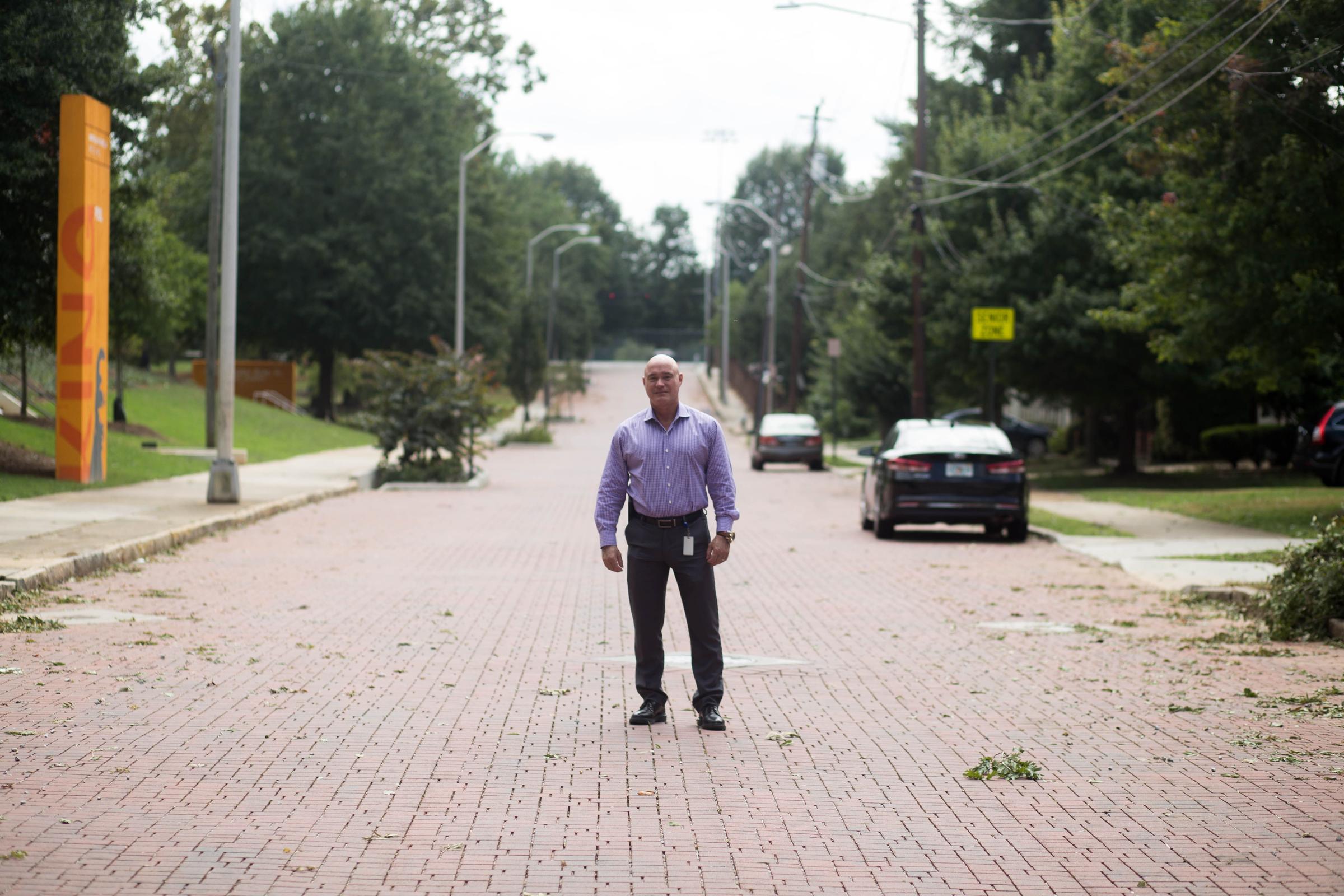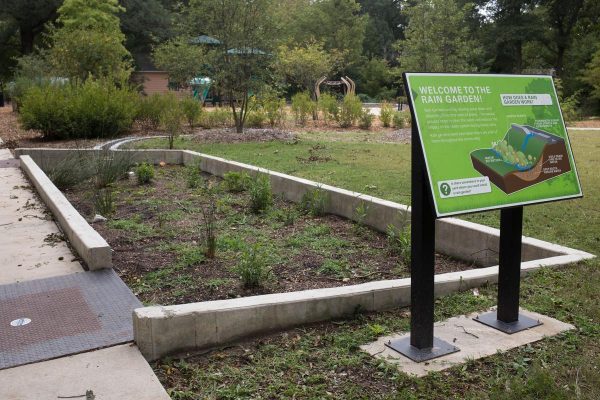How Atlanta’s Green Infrastructure Helps Manage Rain

Todd Hill, with Atlanta Department of Watershed Management, stands on a street of permeable pavers in Summerhill.
IAN PALMER / WABE
Historically, Atlanta has struggled with managing all the rain from big storms. The water rushes into the sewers, overwhelming the system and causing flooding.
In the past few years, one solution the city has emphasized is an approach known as green infrastructure.
So how’d that solution perform during Irma? It did well, according to the Department of Watershed Management.
Red Brick Road
In the Atlanta neighborhood of Summerhill, near the stadium formerly known as Turner Field, a handful of roads are paved with bricks. They fit neatly together, with gravel wedged in the cracks between them, to form a smooth road surface.
“Underneath this brick-lined street, you have 4 feet of gravel material,” says Todd Hill, deputy commissioner of the office of watershed protection at Atlanta’s Department of Watershed Management.
These are permeable pavers. When there’s a storm, water doesn’t just rush into the sewer. Instead, it seeps through the gravel, then slowly feeds into the sewers, so that they don’t get overwhelmed. Flooding used to be a problem here. Hill says now it’s better.
“Also it cleans the stormwater,” says Hill.
With about 6 miles installed, Hill says this is the biggest project like this in the country.
Green Infrastructure
It’s one example of what’s called green infrastructure, which, says Hill, is not just a hippy thing; “It’s a trend now.”
Atlanta is into using this approach with how it manages water – mimicking nature in various ways. So this street lets water soak down, like dirt would. The city is also building gardens that absorb runoff. And big ponds, like the one at Historic Fourth Ward Park.

Hill says the green infrastructure performed as it was supposed to during Irma. I heard from a couple residents who live near the pavers who said the same thing.
“This was not as heavy a storm event as this was designed for,” Hill says.
Irma dropped more than 3 inches of rain in Atlanta over about 24 hours. This infrastructure was designed to handle about 3 inches of rain in a four-hour span, Hill says.
Green infrastructure doesn’t work miracles, though. Hill says it’s more effective for smaller storms, not for monsters with tons and tons of rain.
But to keep reducing flooding and pollution, Atlanta is building even more green infrastructure projects, including another big pond in a new park near Mercedes-Benz Stadium.








